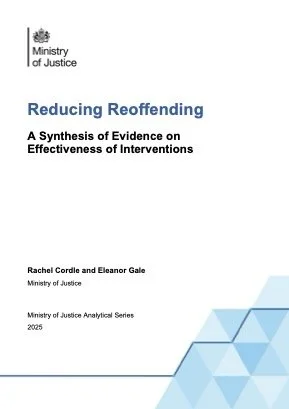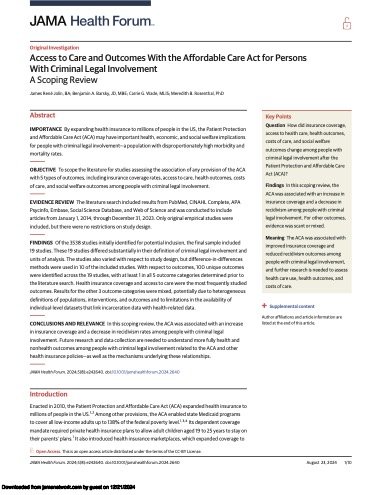By Kelsie Chesnut, Ruth Delaney, Eurielle Kiki, Niloufer Taber
On average, more than 1,000 people are released from state and federal prison every day, totaling 448,400 in 2022 alone.6 Each will need to secure housing, employment, and other essentials. Increasing access to good jobs among people who are formerly incarcerated will speed successful reintegration into society, reducing crime, bolstering local economies, and increasing tax revenues. Postsecondary education plays a crucial role in securing employment in today’s labor landscape. This trend has persisted for decades and shows no signs of changing soon, as underscored by projections from the Bureau of Labor Statistics. These show an annual average of 4.7 million job openings over the next decade, most of which will be concentrated in the health care and social assistance fields; professional, scientific, and technical services; and the transportation and warehousing sectors.7 Entry-level education requirements within these openings will range from some college to a bachelor’s degree.8 Most jobs now require some level of postsecondary education, and by 2031, 72 percent of all jobs in the United States will require education and training beyond high school.9 But just having the necessary level of education may not be enough. Approximately one-third of adults in the United States possess some form of a conviction history— including arrest records or charges without convictions—which often pose barriers to employment.10 Addressing this issue is essential for companies to remain competitive and for the overall health of the U.S. economy to thrive. Those with a history of incarceration see reduced wages and earnings. Studies reveal that past incarceration can lead to an 11 percent reduction in subsequent wages, a decrease of nine weeks in annual employment, and a staggering 40 percent decline in yearly earnings.11 This effect is disproportionately felt by formerly incarcerated Black and Latino men, who experience earnings losses of 44 percent and 41 percent, respectively, equating to an estimated earnings reduction of nearly $179,000 by age 48.12 Access to postsecondary education in prisons has the potential to substantially improve employment rates for people who are formerly incarcerated throughout the United States. On average, people returning home after completing a postsecondary education program while incarcerated can anticipate a nearly 10 percent increase in employment rates compared to those who do not complete a postsecondary education program.13 Low levels of educational attainment are common among incarcerated people, especially Black men.14 The statistics are stark: the incarceration rate for young Black men with low levels of education increased by 22 points in the two decades following 1980.15 By 2004, 34 percent of young Black male high school dropouts were incarcerated daily, a rate 40 times higher than the national average.16 Additionally, imprisonment has become prevalent for Black male dropouts born since the mid-1960s, with 60 to 70 percent experiencing incarceration.17 Despite this, the majority of people (58 percent) who are incarcerated do not complete an education program while in prison.18 Among those who do earn a new educational credential, the majority completed a high school or GED program.19 Only 9 percent of incarcerated people completed a postsecondary program while in prison in 2014.20 However, low enrollment does not reflect low interest: in 2014, 70 percent of people in prison expressed a desire to enroll in an academic program.21 The problem lies in access. Most existing programs are funded through the federal Second Chance Pell program, described in detail in this section, which most recently served a maximum of 20,299 incarcerated students over the 2022–2023 fiscal year.22 People who enroll in college in prison and who engage in careers after release have a lower likelihood of recidivating and a greater likelihood of earning living wages compared to their counterparts who did not.23 Entering a career, rather than transitional or shortterm employment, plays a role in this success. 24 However, finding stable employment post-release is one of the biggest challenges faced by people leaving prison.25 Enrolling in postsecondary programs could increase employment rates among formerly incarcerated people across the United States by nearly 10 percent, according to one estimate.26 An increase in employment rates translates into an increase in earnings for formerly incarcerated people and their families. One estimate placed the increase of the combined wages earned by all formerly incarcerated people at more than $45 million during the first year back in their communities.27 At the same time, the impact of lowered rates of rearrest and/or reconviction could decrease state reincarceration spending by as much as $365 million per year.28 One promising opportunity to reverse this trend took effect on July 1, 2023: the reinstatement of federal Pell Grant eligibility to incarcerated people after nearly 30 years of exclusion. Pell Grants are need-based federal financial aid that can be used to pay for eligible postsecondary education.29 Under the new law and regulations, postsecondary institutions must ensure the credentials they offer in prison are free of licensure barriers for people with convictions.30 These measures aim to prevent student enrollment in programs that would lead to jobs prohibited by state or federal law due to prior convictions.31 However, the restrictions in place are complex and vary widely from state to state. For example, estimates indicate that more than 1,100 occupations face state regulations through licensure, certification, and registration, yet fewer than 60 occupations are regulated by more than half the states, raising concerns about quality and consistency across jurisdictions.32 And although this offers a baseline of protection against inaccessible jobs and careers, a further step those planning Pell-eligible programs could take is to ensure the credential track leads to a “good job.” Study Overview The study was guided by three research questions: › Which occupations in each state are expected to grow in the future and pay a living wage upon entry? › Which of these jobs typically requires some form of postsecondary education? › Which of these good jobs are open to people with felony convictions? To answer the first two questions, Vera drew on available data from the Bureau of Labor Statistics to identify the occupations that could be classified as good jobs. Vera considered occupations to be good jobs if they were projected to grow in each state and the District of Columbia through 2030, paid a living wage at the 10th percentile of the occupation’s pay range as a proxy for entry-level wages, and required a postsecondary credential for entry or advancement.33 Vera made the decision to require that good jobs pay a living wage upon entry—rather than to consider the median income—to account for the position of workers who are formerly incarcerated, who have historically been paid reduced wages compared to their counterparts for a variety of reasons, such as being willing to work for less due to the pressures and challenges they face finding a job; having limited work histories prior to reentry; entering a new field opened to them by participation in education; or, once employed, being subject to stigma that hinders career advancement. However, this criterion resulted in the exclusion of many critical professions, such as educators and social workers, as these professions did not typically pay a living wage for one adult and no children upon entry. This is indicative of a broader labor issue outside of the scope of this study related to how the U.S. economy is structured and the prevalence of low wages overall. (See “Appendix A: Methodology” on page 21.) Vera’s living wage analysis originally included two household structures: one adult and no children; and one adult and two children. Upon analysis, virtually no occupations met the living wage for one adult and two children upon entry. This has a potentially disparate impact on women, who are more likely than men to be sole caregivers to children both generally and upon release from incarceration.34 Regarding the requirement for postsecondary education, Vera included occupations that required a postsecondary nondegree award, an associate’s degree, or a bachelor’s degree. Postsecondary nondegree awards are obtained through programs that lead to a certificate or other award, but not a degree. Some examples of a postsecondary nondegree award include nursing assistants, emergency medical technicians, paramedics, and hairstylists. From this pool of eligible occupations in each state, Vera then identified the top occupations legally accessible to people with felony conviction histories.36 Using data from the National Inventory of Collateral Consequences of Conviction, Vera cross-referenced those good jobs against any legal or regulatory barriers that limit or prevent entry to identify which are accessible to people with felony convictions.37 (See “Appendix A: Methodology” on page 21.) Although legal restrictions may vary based on the severity of conviction, Vera’s analysis is limited to any felony conviction. Findings are aggregated nationally and presented at the jurisdiction level in Appendix B on page 31. Applicable legal restrictions were applied at the time of analysis, but are subject to change.
Brooklyn, NY: Vera Institute of Justice, 2025. 155p.





















